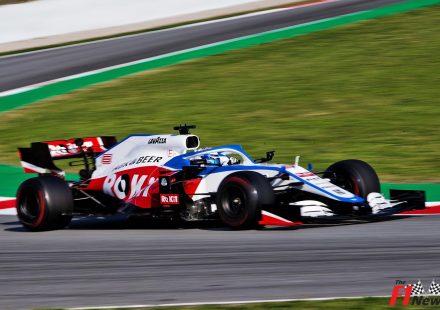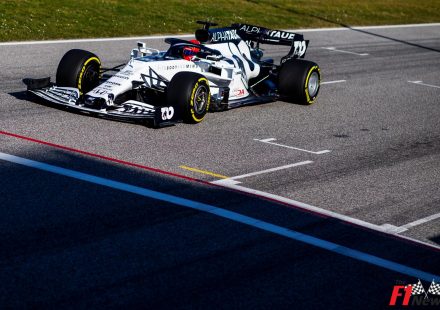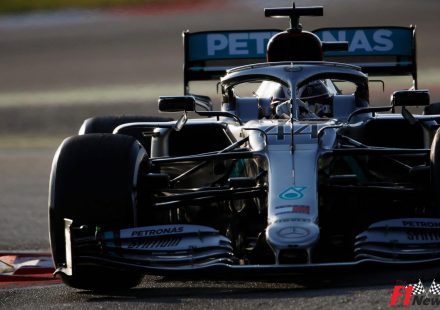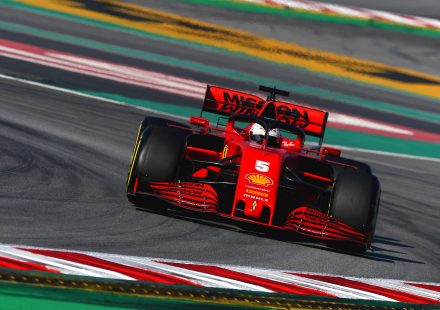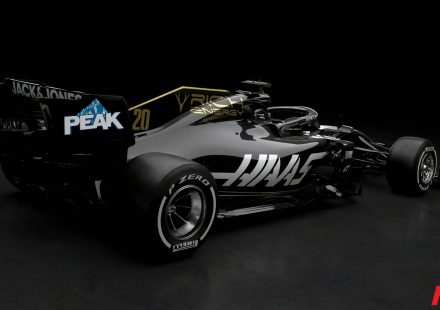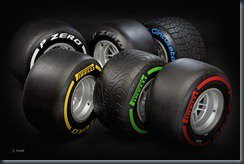 With the new F1 cars storming to meet us, this and the next week, I thought that is time to introduce to you what the new challengers will “wear” this year, and Pirelli was generous with the color codes making them more bright and easy to read with one exception, but this is yet to be proven or not on the track, I am talking about the difference in color between the Medium (White) and Hard (Silver) Tyre and how visible or not will be.
With the new F1 cars storming to meet us, this and the next week, I thought that is time to introduce to you what the new challengers will “wear” this year, and Pirelli was generous with the color codes making them more bright and easy to read with one exception, but this is yet to be proven or not on the track, I am talking about the difference in color between the Medium (White) and Hard (Silver) Tyre and how visible or not will be.
But letting the small talk aside, many of you might know that Pirelli needs to supply 6 different types of tyres to be used accordingly with the nature of track or meteorological conditions.
The SLICK Tyres
The dry weather tyres, also known as slicks, are characterised by a tread pattern that is devoid of blocks or channels. Pirelli engineers have developed four different compounds: super-soft, soft, medium and hard. They need to be different because are designed to suit a wide variety of circuits, according to the type of asphalt, the number and severity of the corners, and last but not least the top speed on the straights lines. Having them will allow the teams to make use of an ample range of strategies which can only contribute to the quality of the race.
The Wet Weather Tyres
The wet weather tyres, are characterised by the grooves in the tread pattern, and they are split into 2 types: full wets (W blue) and intermediates (I green). The full wet tyres can be very easily recognised by the very deep grooves in the tread pattern and sipes designed to drain off water on wet asphalt while the intermediate tyre features channels that are less deep and are designed for damp or only slightly wet surfaces, they can also work under uncertain weather conditions but is preferably to keep them wet at all times.
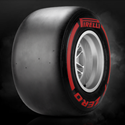
|
P Zero Red, a super-soft for street circuits. Of the four slick tyres, this is the only one to remain unchanged from the 2011 season. It showed itself to be particularly versatile, offering high peaks of performance over slow and twisty circuits that are characterised by slippery asphalt and low lateral loadings. This is the ideal compound for street circuits or semi-permanent facilities.
|
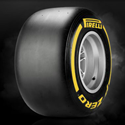 |
P Zero Yellow, softer with less blistering. The new soft tyre is well suited to circuits with low tyre wear. It is designed to offer a high level of grip coupled with a significant amount of degradation, resulting in a comparatively short lifespan that will give the teams a greater number of options with pit stop strategy and even closer racing. Compared to the equivalent tyre in 2011, the new soft offers greater thermal resistance to reduce the risk of blistering. Tested for the first time during free practice at last year’s Abu Dhabi Grand Prix, the new soft tyre is set to be one of the most frequent nominations in 2012, together with the new medium tyre. This combination offers a great deal of flexibility and also a rapid warm-up time.
|
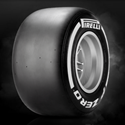 |
P Zero White, the medium tyre that is well suited to all conditions. This extremely versatile tyre adapts itself well to all sorts of track conditions, particularly when asphalt and circuit characteristics are variable. The brand new P Zero White is intended as the ‘option’ tyre on tracks with high temperatures or abrasive surfaces and as the ‘prime’ tyre on tracks that are less severe with fewer demands on the tyres. The new medium compound was tried out last year during free practice at the German Grand Prix and made another appearance during the young driver test in Abu Dhabi.
|
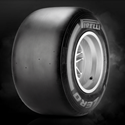 |
P Zero Silver, hard but not inflexible. The new hard tyre guarantees maximum durability and the least degradation, together with optimal resistance to the most extreme conditions, but is not as hard as the equivalent tyre last year. The P Zero Silver is ideal for long runs, taking more time to warm up, as well as being suited to circuits with abrasive asphalt, big lateral forces and high temperatures. The new P Zero Silver was tested at the Barcelona circuit by Pirelli’s test driver Lucas di Grassi, and is the only one of the new compounds that the regular drivers have not yet experienced.
|
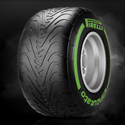 |
Cinturato Green, the intermediate for light rain. After the excellent performances seen from this tyre throughout the 2011 season during particularly demanding races such as the Canadian Grand Prix, Pirelli’s engineers decided not to make any changes to the intermediate tyres. The shallower grooves compared to the full wet tyres mean that the intermediates do not drain away as much water, making this the ideal choice for wet or drying asphalt, without compromising on performance.
|
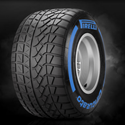 |
Cinturato Blue, the full wets. Of the two wet tyres, only the full wet has been significantly altered compared to the 2011 version. The changes relate to the rear tyres, which use a different profile in order to optimise the dispersal of water in case of aquaplaning and guarantee a greater degree of driving precision. Characterised by deep grooves, similar to those seen on a road car tyre, the wet tyres are designed to expel more than 60 liters of water per second at a speed of 300 kph: six times more than a road car tyre, which disperses about 10 liters per second at a much lower speed.
|
As an extra info you might want to know that the rim diameter of all tyres is 13 inches equally for front and rear, the tread width is of front tyres is 245mm while the rears ones have 345mm and the diameter of the dry tyres is 660mm while the wet tyres have 670mm.
Info & Images: © Pirelli.com
 With the new F1 cars storming to meet us, this and the next week, I thought that is time to introduce to you what the new challengers will “wear” this year, and Pirelli was generous with the color codes making them more bright and easy to read with one exception, but this is yet to be proven or not on the track, I am talking about the difference in color between the Medium (White) and Hard (Silver) Tyre and how visible or not will be.
With the new F1 cars storming to meet us, this and the next week, I thought that is time to introduce to you what the new challengers will “wear” this year, and Pirelli was generous with the color codes making them more bright and easy to read with one exception, but this is yet to be proven or not on the track, I am talking about the difference in color between the Medium (White) and Hard (Silver) Tyre and how visible or not will be. 
